This system includes the lungs, pathways connecting
advertisement
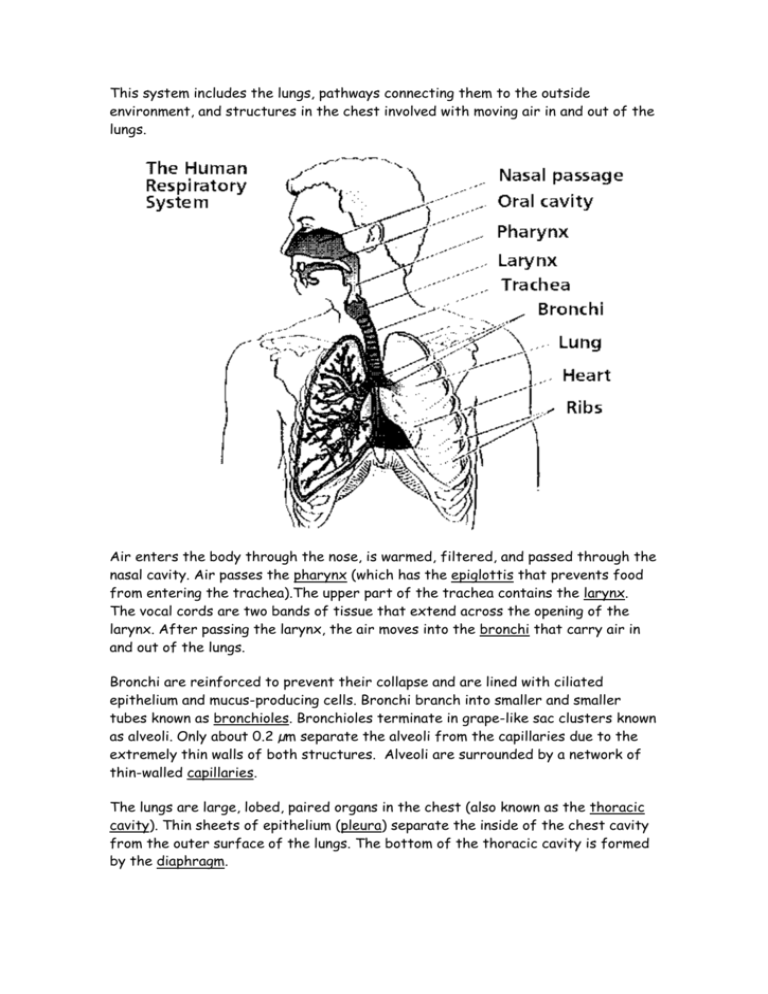
This system includes the lungs, pathways connecting them to the outside environment, and structures in the chest involved with moving air in and out of the lungs. Air enters the body through the nose, is warmed, filtered, and passed through the nasal cavity. Air passes the pharynx (which has the epiglottis that prevents food from entering the trachea).The upper part of the trachea contains the larynx. The vocal cords are two bands of tissue that extend across the opening of the larynx. After passing the larynx, the air moves into the bronchi that carry air in and out of the lungs. Bronchi are reinforced to prevent their collapse and are lined with ciliated epithelium and mucus-producing cells. Bronchi branch into smaller and smaller tubes known as bronchioles. Bronchioles terminate in grape-like sac clusters known as alveoli. Only about 0.2 µm separate the alveoli from the capillaries due to the extremely thin walls of both structures. Alveoli are surrounded by a network of thin-walled capillaries. The lungs are large, lobed, paired organs in the chest (also known as the thoracic cavity). Thin sheets of epithelium (pleura) separate the inside of the chest cavity from the outer surface of the lungs. The bottom of the thoracic cavity is formed by the diaphragm.
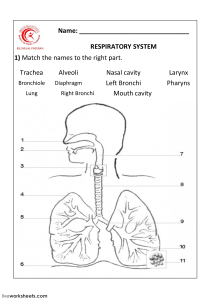

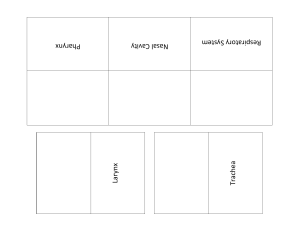

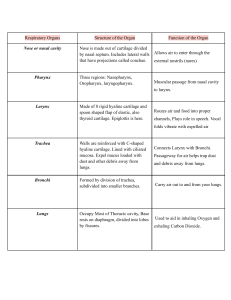
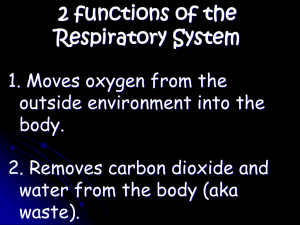
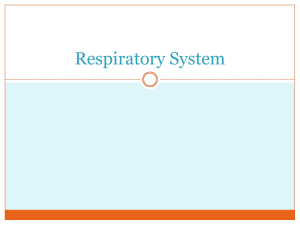


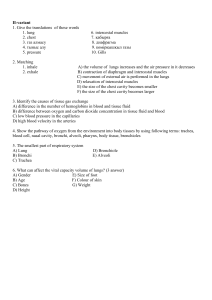
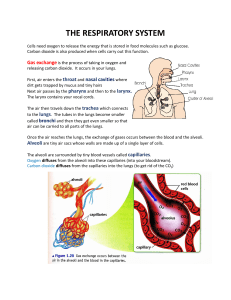
![The Breathing System Key Terms [PDF Document]](http://s3.studylib.net/store/data/008697551_1-df641dd95795d55944410476388f877c-300x300.png)